#justiceforfloyd
Text
Fascinated by this yard sign in my neighborhood that says “Black Lives Matter” but the word lives is highlighted in blue, and then below that it says #JusticeForFloyd and #NotAllCopsAreBad
0 notes
Text
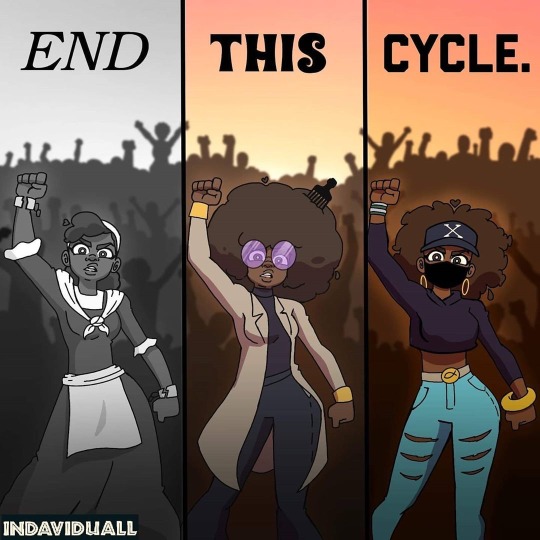
Artwork by @indaviduall on Instagram.
Let’s not allow a smaller media coverage on the black lives matter movement and protests feed your mind that this issue has been dealt with and that it’s no longer ongoing.
Don’t listen to claims of being blind to race or that it’s not an impediment in any nation if it’s not something you will ever have to face, instead lets embrace everyone and culture that we’re blessed to have around the world.
Let’s put an end to lives being carelessly slaughtered by police officers thinking and acting with rose colored white biased glasses. We’re not going to change if we continue to allow ourselves to be segregated further.
#blacklivesalwaysmatter#blacklivesmatter#blm#black lives are human lives#black lives are important#black lives matter#black lives movement#black lives are beautiful#black lives count#black lives have value#black lives fucking matter#justice for black people#justiceforfloyd#yvonnesmallwood#amadoudiallo#ericgarner#renishamcbride#saytheirnames#blm movement#blm protests#racial injustice#racial inequality#racial profiling#defundthepolice#atatianajefferson#altonsterling#endracialinjustice#endracialprofiling#george floyd#justiceforbreonnataylor
15K notes
·
View notes
Text
Watching the sentencing and um WHAT THE ACTUAL FUCK. Chauvin gave his condolences to the family of a man he killed. How fucked up is that? Also may he rot in jail for the rest of his life because we all know he’s going to hell no matter what comes.
666 notes
·
View notes
Text
tips for protestors.
igas my parents went to many protests when they were younger, and although i can’t go to any protests because i’m too young (in their eyes) i do have some tips from them.
note: trump HAS given the word for the national guard to use lethal force against protestors. i understand that it is hard to stay silent if there is a protest in your area, but there is a chance the bullets won’t be foam or rubber. stay safe, stay smart. please don’t become a statistic.
secondly, if you are in the san diego area, do NOT attend the protest that was advertised on facebook. it was created by white supremacists to target black youths.
cover any scars, tattoos, or distinct features you have. cops will use this to identify you, especially if you live in the area. they will take anything you may have done and attempt to arrest you by any means.
wear a face mask, bandana, or some other covering. this is not only because of covid-19, but it will make it harder for them to identify you.
wear clothes you wouldn’t normally wear. this is for the same reason. make sure not to wear those clothes in public until after the protests are over, that way they can’t identify you based on your outfit. also avoid jewelry and accessories.
bring a backpack. this will not only help carry the items you should bring, but it will also keep your hands free and make running easier when needed. make sure it is a real backpack, one that is on your back. and over the shoulder bag or satchel will make it harder to run.
bring plenty of water, a tourniquet (or, if possible, the items needed for one) a medical kit, an extra face covering, and milk. the water is important for 2 things: rinsing your eyes from tear gas and putting out the actual grenades. a tourniquet will be especially important for when the cops start using lethal force. do your research before using one, though, to avoid causing additional harm. the milk will help with your actual skin that will be burning from tear gas, but don’t put it in your eyes.
prepare to be tear gassed. if you sense things are getting tense, try to douse an extra face covering (like a scarf) in water. it will keep the gas from getting in your airways. wear goggles, like the ones you use when you swim. they stick to your face to keep the water from getting in, and will do the same with tear gas. cover as much of your head as possible, and tie up long hair. don’t wear makeup, because tear gas clings to it like it does your bodily fluids. also, if possible, avoid contacts. it can get stuck behind your contacts and that isn’t something you want. similarly, don’t rub your eyes, because the chemicals can get behind your eyes, which will open a whole new set of problems.
if and when you get gassed, stay calm. if you are able, find anyone on the ground and get them help. tear gas will settle low to the ground shortly after being fired and will make their afflictions worse. make sure to watch out for yourself and others, and get out of the area as quickly as possible.
there are two methods to put out tear gas. the first is by covering the capsule with a traffic cone, then pouring water through the hole until it goes out. make sure to wear gloves and don’t touch your face. the downside is that this takes a lot of water because this is not very accurate. the second method needs to be handled with extreme caution. only do this if you are wearing heat protective gloves. take the capsule and put it inside of a metal water bottle WHILE WEARING PROTECTIVE GLOVES. shake it until the fire inside the grenade goes out. it is very important that you have proper protection, especially with such close exposure to the gas. a gas mask is your safest bet.
another way to avoid identification is by putting a rock in your shoe. im unsure of how advanced the stride detection system is in the us, but during the hong kong protests, they would recognize protestors based on their walk. if you put a rock in your shoe, although it will be uncomfortable, it will help keep you anonymous.
use your privilege for good. if you are not a poc and are attending the protests, protect your poc counterparts. unfortunately, cops are statistically less likely to attack white protestors. (see the physical protesting of the quarantine which was led mostly by white people.) if things are getting tense between a cop and a poc protestor, step between them if you are comfortable.
identify undercover cops. undercover cops will deliberately cause mayhem in a peaceful protest to give reason for cops to attack. you can identify them by their shoes and their masks, as well as their attitudes. all cops, undercover or not, will almost always wear the same shoes because they have iron fillings that allow them to break people’s feet/hands/other bones when they have no other defense due to being undercover. they will also wear the same gas masks as the other cops. if you see a protestor put on one of these masks, you should leave because it means there will be tear gas deployed soon.
don’t bring any weapons that are illegal. this will give them probable cause to arrest you.
most importantly: stay safe. protect yourselves and others. if things get bad, run. they can’t catch everyone, and if they take more lives it will only fan the flame.
i will probably add more things as they come to me. i am a really small account but i hope this helps anyone. if you have any tips, comment and i’ll probably add them on here.
#minneapolis#protest#justice#black lives matter#blm#acab#1312#protestors#riot#justiceforfloyd#george floyd#black lives#if we burn you burn with us#overthrow the government#poc#person of color#not a shitpost
10K notes
·
View notes
Text

14K notes
·
View notes
Text

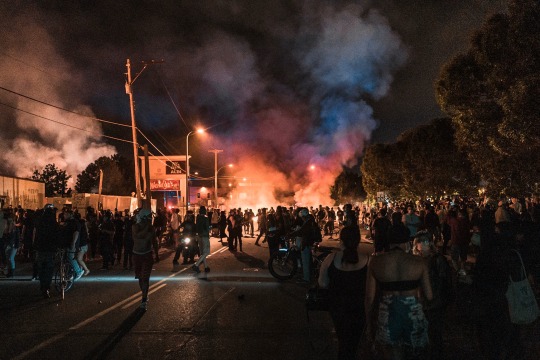




respect existence or expect resistance
#justiceforgeorgefloyd#minneapolisriots#justiceforfloyd#blacklivesmatter#blacklivesalwaysmatter#whitesilenceisviolence#nojusticenopeace#lakestreet#georgefloyd#fuck12#fmpd#minneapolis#fuckminneapolispolice#murderers#bethechange#blm#istandwithyou
2K notes
·
View notes
Text

2K notes
·
View notes
Text


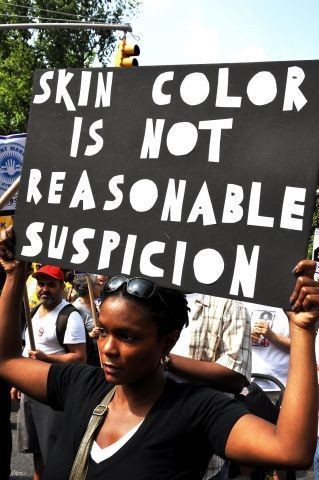
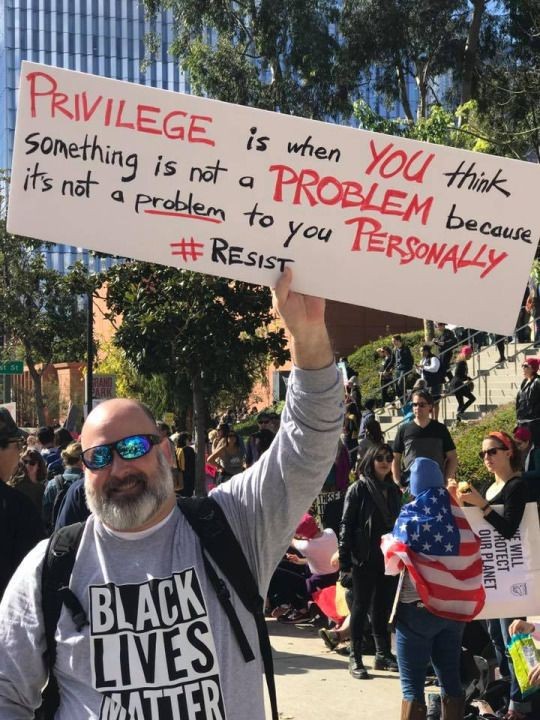
✊🏻✊🏼✊🏽✊🏾✊🏿
#black lives matter#blackouttuesday#protest#blm protests#equal rights#equality#Everyone vs racism#george floyd#justiceforblackpeople#justiceforfloyd#justiceforgeorgefloyd
1K notes
·
View notes
Photo
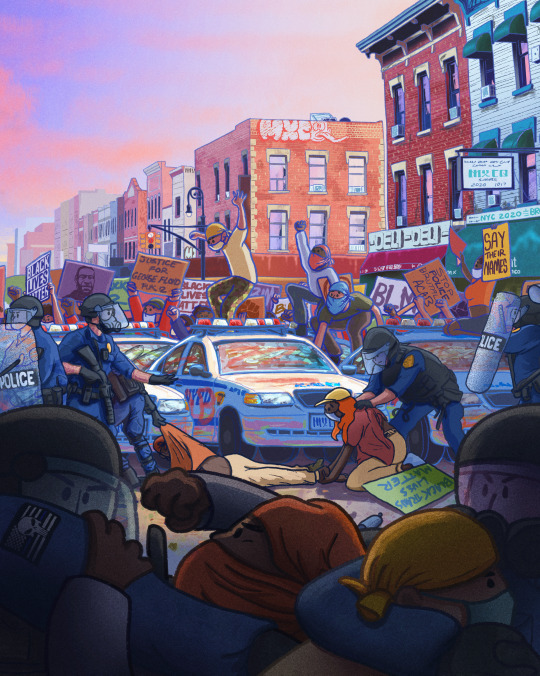
70 notes
·
View notes
Text

Reflections on the Color of My Skin
By Neil DeGrasse Tyson
Wednesday, June 3, 2020
My colleague had other encounters with the law that he shared later that night, but his first story started a chain reaction among us. One by one we each recalled multiple incidents of being stopped by the police. None of the accounts were particularly violent or life-threatening, although it was easy to extrapolate to highly publicized cases that were. One of my colleagues had been stopped for driving too slowly. He was admiring the local flora as he drove through a New England town in the autumn. Another had been stopped because he was speeding, but only by five miles per hour. He was questioned and then released without getting a ticket. Still another colleague had been stopped and questioned for jogging down the street late at night.
As for me, I had a dozen different encounters to draw from. There was the time I was stopped late at night at an underpass on an empty road in New Jersey for having changed lanes without signaling. The officer told me to get out of my car and questioned me for ten minutes around back with the headlights of his squad car brightly illuminating my face. Is this your car? Yes. Who is the woman in the passenger seat? My wife. Where are you coming from? My parent’s house. Where are you going? Home. What do you do for a living? I am an astrophysicist at Princeton University. What’s in your trunk? A spare tire, and a lot of other greasy junk. He went on to say that the “real reason” why he stopped me was because my car’s license plates were much newer and shinier than the 17-year-old Ford that I was driving. The officer was just making sure that neither the car nor the plates were stolen.
Among my other stories, I had been stopped by campus police while transporting my home supply of physics textbooks into my newly assigned office in graduate school. They had stopped me at the entrance to the physics building where they asked accusatory questions about what I was doing. It was 11:30 p.m. Open-topped boxes of graduate math and physics textbooks filled the trunk. And I was transporting them into the building, which left me wondering how often that scenario shows up in police training videos.
We went on for two more hours. But before we retired for the night we searched for common denominators among the stories. We had all driven different cars—some were old, others were new, some were undistinguished, others were high performance imports. Some police stops were in the daytime, others were at night. Taken one-by-one, each encounter with the law could be explained as an isolated incident where, in modern times, we all must forfeit some freedoms to ensure a safer society for us all. Taken collectively, however, you would think the cops had a vendetta against physicists because that was the only profile we all had in common. In this parade of automotive stop-and-frisks, one thing was for sure, the stories were not singular, novel moments playfully recounted. They were common, recurring episodes. How could this assembly of highly educated scientists, each in possession of the PhD—the highest academic degree in the land—be so vulnerable to police inquiry in their lives? Maybe the police cued on something else. Maybe it was the color of our skin. The conference I had been attending was the 23rd meeting of the National Society of Black Physicists. We were guilty not of DWI (Driving While Intoxicated), but of other violations none of us knew were on the books: DWB (Driving While Black), WWB (Walking While Black), and of course, JBB (Just Being Black).
None of us were beaten senseless. None of us were shot. But what does it take for a police encounter to turn lethal? On average, police in America kill more than 100 unarmed black people per year. Who never made it to our circle? I suspect our multi-hour conversation would be rare among most groups of law-abiding people.
As I compose this, about 10,000 chanting protestors are filing past my window in Manhattan. And because of the intermittent looting and related violence, the curfew for this evening has been pushed earlier, to 8 p.m., from 11 p.m. in the preceding days. The most common placard was “Black Lives Matter.” Many others simply displayed the name George Floyd, who was handcuffed face-down on the street with a police officer’s knee on the back of his neck, applied with a force of at least half the officer’s body weight, resulting in his death. Curious irony that NFL star Colin Kaepernick offered a simple demonstration of care and concern for the fate of black people in the custody of police officers, by taking a knee during the Star Spangled Banner before football games. (One media outlet mangled the moment by describing him as protesting the national anthem.) The outrage against his silent act of concern for a national problem persisted through the 2017 season when, as a free agent, he went unsigned by any team to continue his livelihood.
So, we went from a peaceful knee to the ground to a fatal knee to the neck.
The way peaceful protesters and the press are being shoved, maced, tear-gassed, pepper-sprayed, and tackled in the streets of our cities (when the police should have focused on arresting the looters) you would think the protestors were doing something illegal or un-American. But, of course, the U.S. Constitution has something to say about it:
Congress shall make no law … abridging the freedom … of the press; or the right of the people peaceably to assemble, and to petition the government for a redress of grievances.
Which amendment was that? The First Amendment. So, the founders of this nation felt quite strongly about it, empowering one to declare that protesting for redress of grievances is one of the most American things you can do. If you are the police, pause and reflect how great is the country whose Constitution endorses peaceful protests.
What do we actually expect from our police officers? To protect the peace and arrest the bad guys, I presume. But also, to be armed with lethal force that they can use when necessary. That part clearly requires training on how and when to use (and not use) the power of your weapons. The rigorous Minneapolis Police Academy training lasts 4 months. The slightly more rigorous NYC Police Academy lasts 6 months.
Yet to become a certified pastry chef at a prestigious culinary academy requires 8 months. The perfect croissant demands it. So maybe, just maybe, police recruits could benefit from a bit more training before becoming officers.
In 1991, Rodney King (age 25) was struck dozens of times, while on the ground, by four LAPD officers, with their batons, after being tased. The grainy 1990s video of that went media-viral, inducing shock and dismay to any viewer.
But I wasn’t shocked at all.
Based on what I already knew of the world, my first thought was, “We finally got one of those on tape.” Followed by, “Maybe justice will be served this time.” Yes, that’s precisely my first thought. Why? Since childhood my parents instilled in me and my siblings, via monthly, sometimes weekly lessons, rules of conduct to avoid getting shot by the police. “Make sure that when you get stopped, the officer can always see both of your hands.” “No sudden movements.” “Don’t reach into your pockets for anything without announcing this in advance.” “When you move at all, tell the officer what you are about to do.” At the time, I am a budding scientist in middle school, just trying to learn all I can about the universe. I hardly ever think about the color of my skin—it never comes up when contemplating the universe. Yet when I exit my front door, I’m a crime suspect. Add to this the recently coined “White Caller Crime,” where scared white people call the police because they think an innocent black person is doing something non-innocent, and it’s a marvel that any of us achieve at all.
The rate of abuse? Between one and five skin-color-instigated incidents per week, for every week of my life. White people must have known explicitly if not implicitly of this struggle. Why else would the infamous phrase, “I’m free, white, and 21” even exist? Here is a compilation of that line used in films across the decades. Yes, it’s offensive. But in America, it’s also truthful. Today’s often-denied “white privilege” accusation was, back then, openly declared.
The deadly LA riots associated with the Rodney King incident are often remembered as a response to the beating. But no. Los Angeles was quiet for 13 months afterward. Everyone had confidence, as did I, that the video was just the kind of evidence needed to finally bring about a conviction in the abuse of power. But that’s not what came to pass. The riots were a response to the acquittal of the four officers in the incident, and not to the incident itself. And what is a riot if not the last act of helpless desperation.
The 1989 film by Spike Lee “Do the Right Thing,” which explored 1980s black-white-police tensions in Brooklyn, New York, ends with a dedication to the families of six people. Eleanor Bumpers (age 66), Michael Griffith (age 23), Arthur Miller (age 30), Edmund Perry (age 17), Yvonne Smallwood (age 28), and Michael Stewart (age 25). All are black. One was killed by a white mob. The rest were unarmed and shot by police or otherwise died while in police custody. All deaths occurred within the 10 years preceding film, and all occurred in New York City. None of the police-induced deaths resulted in convictions, as continues to be true for 99% of all police killings.
We know of these events because they each ended in death. But even so, back then, it was just local news. Was this just NYC’s problem? I asked myself. But for every police-related death anywhere, how many unarmed victims are shot by police and don’t die, or are wrongfully maimed or injured? Most of those cases didn’t even make the local news. But if you lived there, you knew. We all knew. For what it’s worth, NYC now has the lowest police-caused death rate per capita among the sixty largest cities in the US. Is it that extra two months training in the Police Academy?
The corrosion and ultimate erosion of our confidence in the legal system in cases such as these, even in the face of video evidence, has spawned a tsunami of protests. With sympathetic demonstrations across the United States and around the world. If the threat of prison time for this behavior does not exist—acting as a possible deterrent—then the behavior must somehow stop on its own.
Some studies show that the risk of death for an unarmed person at the hands of the police is approximately the same no matter the demographics of who gets arrested. Okay. But if your demographic gets stopped ten times more than others, then your demographic will die at ten times the rate. I suppose we first have to get the bias factor down to zero, but then there’s still the matter of police killing unarmed suspects, white people included.
I talk a lot. But I don’t talk much about any of this, or the events along this path-of-most-resistance that have shaped me. Why? Because throughout my life I’ve used these occasions as launch-points to succeed even more. Yes, I parlayed the persistent rejections of society, which today might be called micro-aggressions, into reservoirs of energy to achieve. I learned that from my father, himself active in the Civil Rights Movement during the 1950s and 1960s.
In a way, I am who I am precisely because countless people, by their actions or inactions, said I could never be what I am. But what if you don’t have this deep supply of fuel? What becomes of you? Who from historically disenfranchised communities, including women, LGBTQ+, and anybody of color, are missing—falling shy of their full potential because they ran out of energy and gave up trying.
Are things better today than yesterday? Yes. But one measure of this truth is a bit perverse. Decades ago, unarmed black people getting beaten or killed by the police barely merited the local news. But now it’s national news—even breaking news—no matter where in the country it occurs.
So how to change all this? Organizations have surely assembled demands for police departments. Here, I offer a list of my own, for policy experts to consider:
Extend police academies to include months of cultural awareness and sensitivity training that also includes how not to use lethal force.
Police officers should all be tested for any implicit bias they carry, with established thresholds of acceptance and rejection from the police academy. We all carry bias. But most of us do not hold the breathing lives of others in our hands when influenced by it.
During protests, protect property and lives. If you attack nonviolent protesters you are being un-American. And you wouldn’t need curfews if police arrested looters and not protesters.
If fellow officers are behaving in a way that is clearly unethical or excessively violent, and you witness this, please stop them. Someone will get that on video, and it will give the rest of us confidence that you can police yourselves. In these cases, our trust in you matters more to a civil society than how much you stick up for each other.
And here’s a radical idea for the Minneapolis Police Department—why not give George Floyd the kind of full-dress funeral you give each other for dying in the line of duty? And vow that such a death will never happen again.
Lastly, when you see black kids, think of what they can be rather than what you think they are.
Respectfully Submitted
Neil deGrasse Tyson — trying hard to Keep Looking Up.
Copyright © 2018 Neil deGrasse Tyson
#neil degrasse tyson#reflections on the color of my skin#reflections#black lives matter#justiceforfloyd#blm movement#blm#support blm#science#george floyd#justice for black lives#justice for poc#no justice no peace#know justice know peace#white silence is violence#physics#amerikkka#blacklivesmatter
760 notes
·
View notes
Text
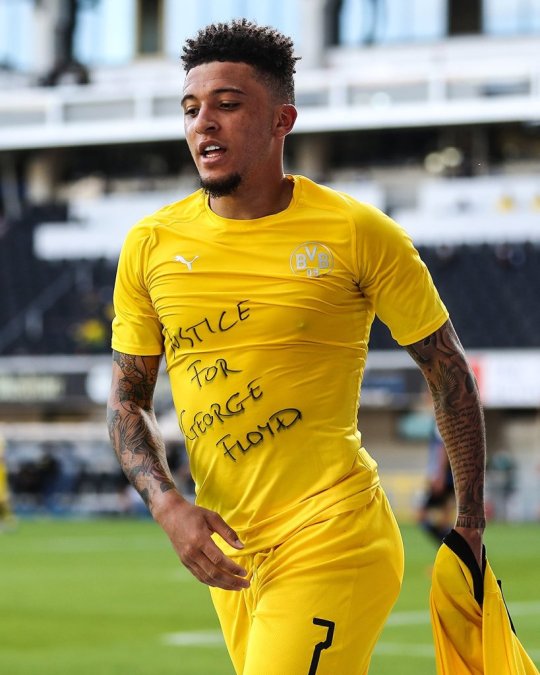
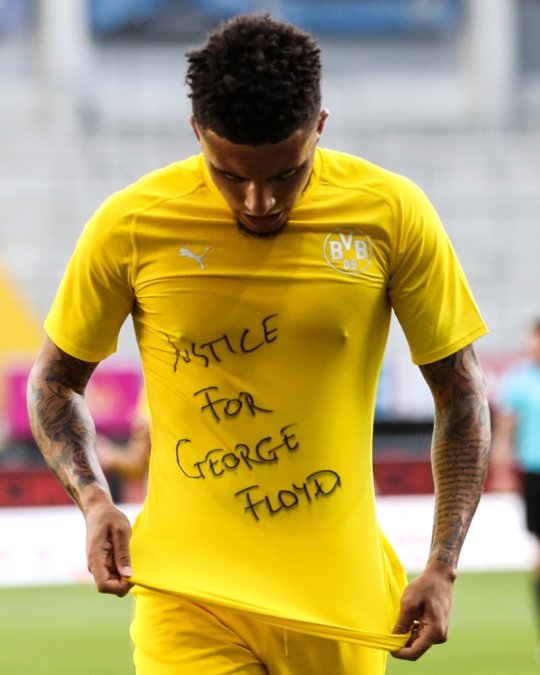
justice for george floyd.
795 notes
·
View notes
Text

JusticeForGeorgeFloyd
Fotografía: Mark Clennon.
#photography#fotografia#eeuuu#united states#black lives matter#trump#trumptower#nyc#newyork#justiceforfloyd#justiceforgeorgefloyd#george floyd#protest#protesta#racisim#racismo
623 notes
·
View notes
Text

There is a large difference between racial solidarity and performative activism. Be amongst those that want to see that racism is abolished and the continuation of improving black lives.
Remember if someone is able to use their social media platforms to broadcast some “skinny tea,” “meal plan,” “hair gummies” then someone should post about the black lives matter movement. To want a change and to care for the welfare of all humans, but most importantly those that are being abused by society, government, and police the most.

#blacklivesalwaysmatter#blacklivesmatter#blm#black lives are human lives#black lives are important#black lives matter#black lives movement#black lives are beautiful#black lives count#black lives have value#black lives fucking matter#justice for black people#justiceforfloyd#justice for breonna#walterscott#renishamcbride#atatianajefferson#altonsterling#amaudarbery#ericgarner#police brutality#defundthepolice#defundthenypd#racial injustice#racial inequality#racial profiling#racisim#keithscott#claudereese#defundpolice
4K notes
·
View notes
Video
#george floyd#blacklivesmatter#justiceforfloyd#racism#usa#united states of america#protest#human rights#justice#minneapolis#tiktok
589 notes
·
View notes
Text
"When injustice becomes law, resistance becomes duty".
— Thomas Jefferson
492 notes
·
View notes
Text


Fuck the police
#black lives matter#john boyega#blm protests#blm#pig#fuck the police#they dont care about us#justiceforfloyd#george floyd
548 notes
·
View notes